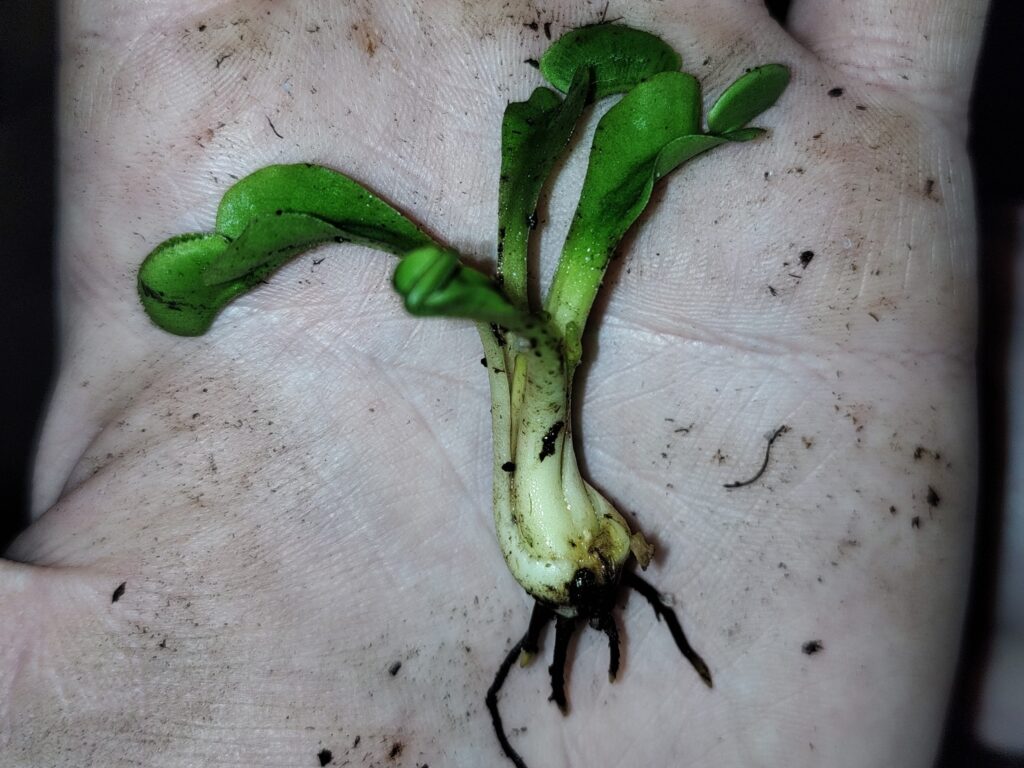Sometimes, Dionaea muscipula (Venus flytraps) and Sarracenia (pitcher plants) can develop rhizome rot. If this happens, swift action is necessary, as the fungus spreads rapidly and can overwhelm the plant in a short time. In this article, you’ll learn how it in Venus flytraps and pitcher plants appears and how to combat it.
Origin of rhizome rot
Rhizome rot typically arises due to improper cultivation. Weakening of the plant can result from inadequate growing conditions, such as insufficient light, excessive watering, lack of dormancy, overly low temperatures during dormancy, or inappropriate air humidity. Another factor that might not be immediately apparent is over-fertilization. Over-fertilized plants tend to have immature tissues, making them susceptible to rot—a common issue with „store-bought“ plants.
Symptoms of rot
Rot is initially evident through the abnormal appearance of traps. The leaves/traps appear dry despite the plant receiving adequate watering. The plant retains its color. Browning of traps is a normal process where plants renew their old traps. Upon removing the plant from the substrate, you’ll find characteristic brown discoloration on the rhizome indicating rot.
How to save a plant affected by rot
The affected plant must be removed from the substrate, and all infected parts should be cut away. Failure to remove any affected parts will allow the rot to spread further.
The image shows an infected rhizome with typical brown discoloration from rot.
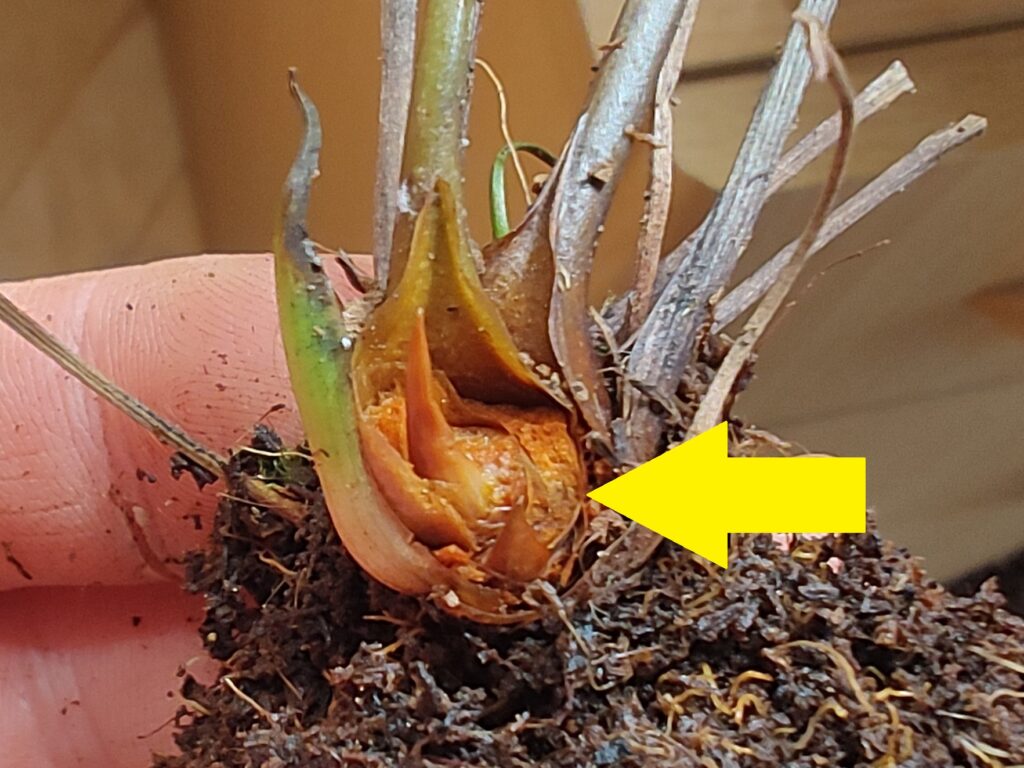
To save the plant, the rot must be cut away using a sharp tool (knife, razor blade, scalpel, etc.). After the first cut, insufficient removal of the rot is noticeable, as half of the rhizome remains infected.
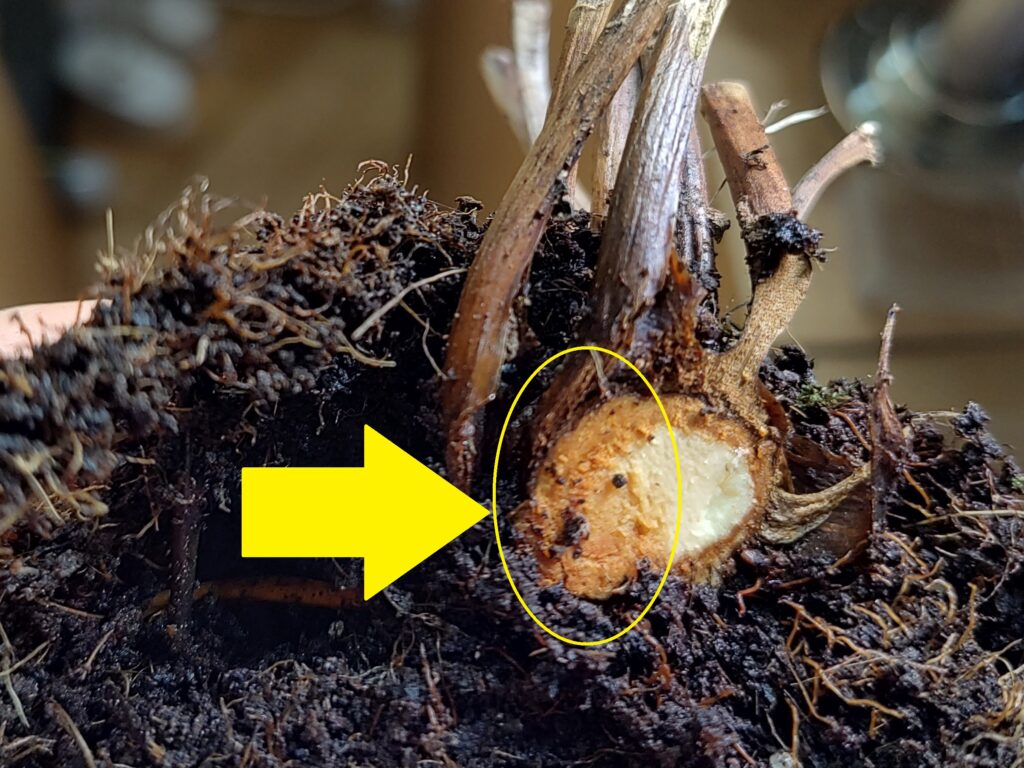
After the next cut, the rhizome is free of rot, and the plant can be replanted.
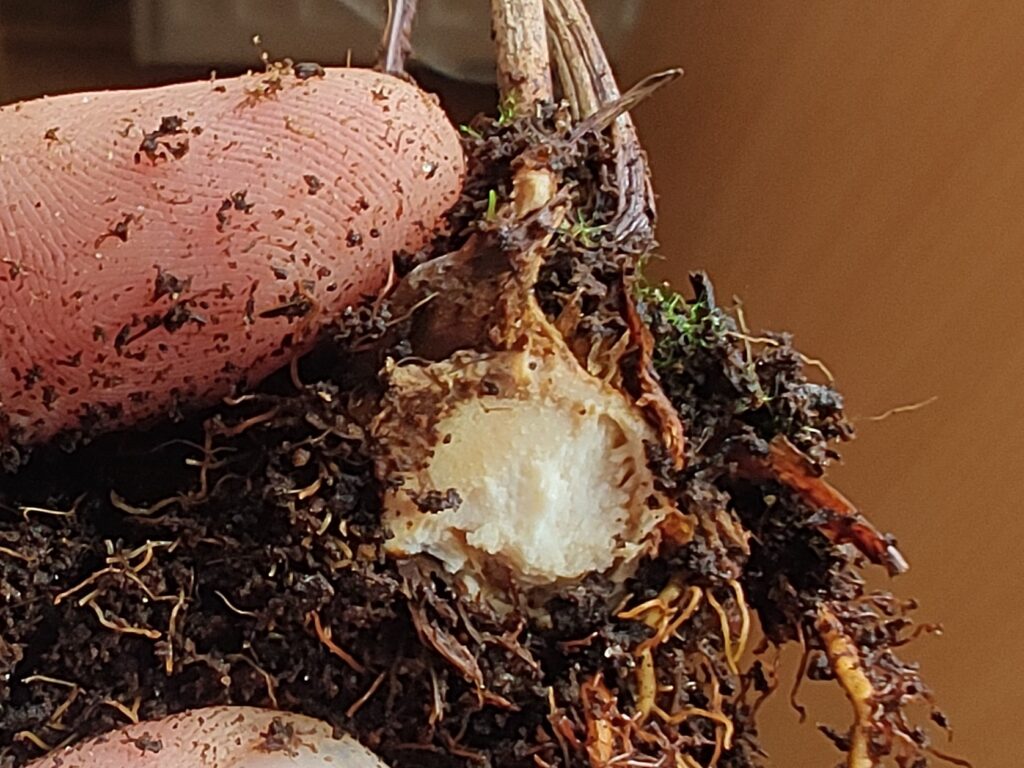
In many cases, removing rot from a Venus flytrap can be addressed without cutting. The photograph shows the characteristic brown discoloration caused by the rot.
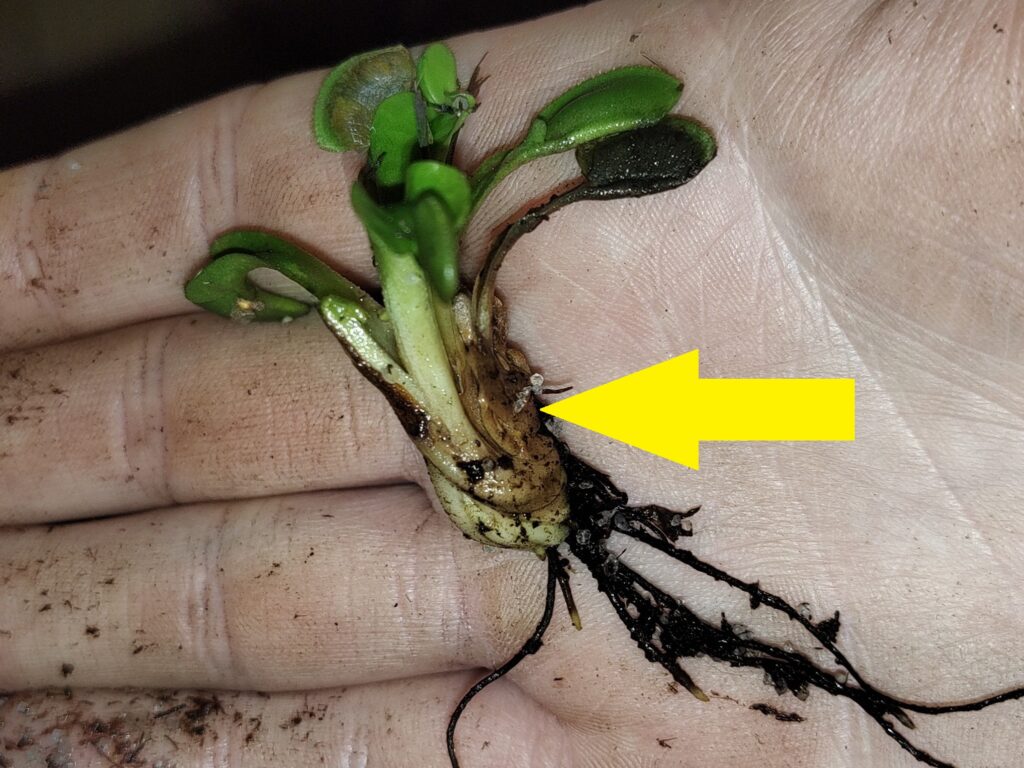
Due to the structure of the Venus flytrap’s rhizome, the infected part can often be peeled away (similar to peeling a banana). However, if the infection is more extensive, cutting will become unavoidable. Once the infected part is peeled off and the entire rhizome is clean and white, the plant can be replanted.
